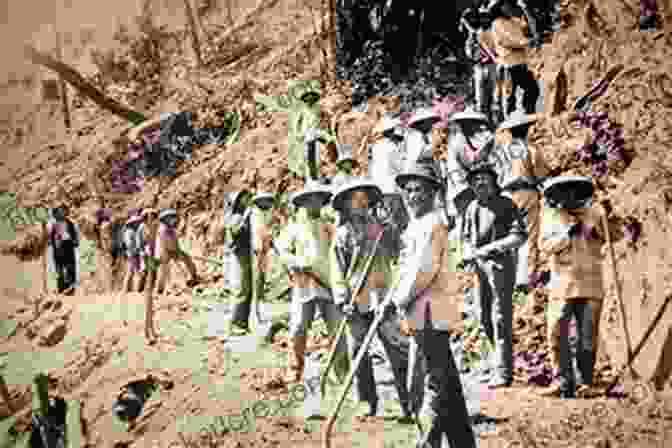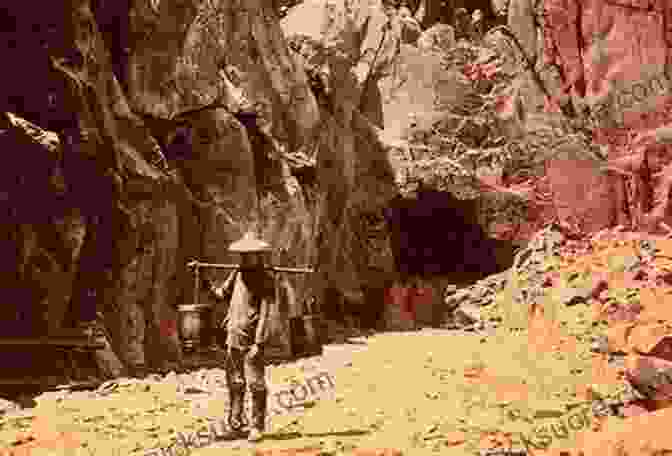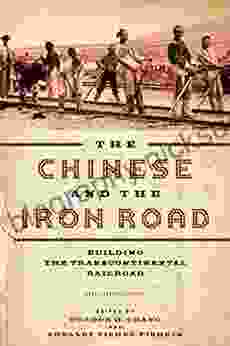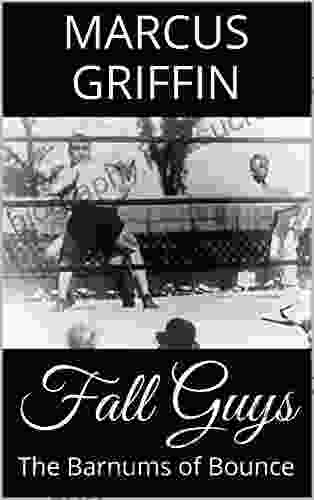Building the Transcontinental Railroad: A Pivotal Moment in Asian American History

The construction of the Transcontinental Railroad, completed in 1869, stands as one of the most remarkable engineering feats in American history. Spanning over 1,900 miles, the railroad connected the Eastern and Western United States, revolutionizing transportation, trade, and communication. While the project is often celebrated for its technological advancements and economic impact, it also holds significant historical importance for Asian Americans, who played a crucial role in its construction. This article sheds light on the experiences and contributions of Asian Americans, particularly Chinese workers, who toiled tirelessly to build this iconic infrastructure.
4.4 out of 5
| Language | : | English |
| File size | : | 33109 KB |
| Text-to-Speech | : | Enabled |
| Screen Reader | : | Supported |
| Enhanced typesetting | : | Enabled |
| Word Wise | : | Enabled |
| Print length | : | 558 pages |
Labor Shortages and Immigration
As the United States embarked on the ambitious project of constructing a transcontinental railroad, it faced a severe labor shortage. The Civil War had depleted the workforce, and the harsh conditions of railroad construction deterred many American workers. To address this problem, railroad companies turned to immigrant labor, and Chinese workers emerged as a vital source of manpower.

Beginning in 1865, thousands of Chinese immigrants arrived in the United States, eager for work and opportunity. They were recruited by labor contractors who promised high wages and a chance to earn a better life. Many of these workers hailed from the southern Chinese province of Guangdong, and they brought with them their own unique skills and techniques.
Hardships and Discrimination
The Chinese workers who labored on the Transcontinental Railroad faced immense hardships and discrimination. They worked long hours in hazardous conditions, often using primitive tools and explosives to blast through mountains and level the terrain. The pay was meager, and they lived in overcrowded and unsanitary camps.
In addition to the physical challenges, Chinese workers endured widespread discrimination. They were subjected to racial slurs, violence, and exploitation. American workers resented their presence, fearing competition for jobs. Some states and territories passed laws that restricted Chinese immigration and denied them basic rights.
Despite these challenges, the Chinese workers persevered. They formed their own communities, providing mutual support and cultural continuity. They also developed innovative techniques for railroad construction, such as the use of bamboo scaffolding and the "Chinese wheelbarrow," a more efficient version of the traditional wheelbarrow.
Essential Contributions
The contributions of Chinese workers to the Transcontinental Railroad were invaluable. They comprised nearly 90% of the workforce on the Central Pacific Railroad, which built the western portion of the line. Their labor was instrumental in overcoming the formidable challenges of the rugged terrain, including the treacherous Sierra Nevada mountains.

The Chinese workers' skills and dedication played a crucial role in the timely completion of the railroad. They worked tirelessly to lay track, construct bridges, and tunnel through mountains. Their efforts helped to connect the East and West, paving the way for increased trade, migration, and economic growth.
Legacy and Impact
The completion of the Transcontinental Railroad in 1869 marked a significant turning point in American history. It transformed the nation's transportation system, facilitated westward expansion, and accelerated the growth of industries. However, the contributions of Chinese workers were often overlooked or downplayed in the official narratives of the era.
In recent decades, there has been a growing recognition of the essential role played by Chinese Americans in building the Transcontinental Railroad. Museums, historical societies, and educational institutions have dedicated exhibits and programs to highlight their experiences and contributions. This increased awareness has helped to shed light on a hidden chapter in American history and fostered a greater appreciation for the diversity of the American workforce.
The legacy of the Transcontinental Railroad continues to inspire generations of Asian Americans. It serves as a testament to their resilience, determination, and contributions to the United States. The Chinese workers who labored on the railroad paved the way for future generations of Asian immigrants who have played vital roles in shaping American society.
The construction of the Transcontinental Railroad was a pivotal moment in Asian American history. The Chinese workers who played a major role in its construction endured immense hardships and discrimination, but their contributions were essential to the success of this historic project. Their labor and sacrifices helped to connect the United States and paved the way for increased economic growth and cultural exchange. The legacy of the Transcontinental Railroad continues to resonate today, reminding us of the invaluable contributions made by Asian Americans to the fabric of American history.
4.4 out of 5
| Language | : | English |
| File size | : | 33109 KB |
| Text-to-Speech | : | Enabled |
| Screen Reader | : | Supported |
| Enhanced typesetting | : | Enabled |
| Word Wise | : | Enabled |
| Print length | : | 558 pages |
Do you want to contribute by writing guest posts on this blog?
Please contact us and send us a resume of previous articles that you have written.
 Fiction
Fiction Non Fiction
Non Fiction Romance
Romance Mystery
Mystery Thriller
Thriller SciFi
SciFi Fantasy
Fantasy Horror
Horror Biography
Biography Selfhelp
Selfhelp Business
Business History
History Classics
Classics Poetry
Poetry Childrens
Childrens Young Adult
Young Adult Educational
Educational Cooking
Cooking Travel
Travel Lifestyle
Lifestyle Spirituality
Spirituality Health
Health Fitness
Fitness Technology
Technology Science
Science Arts
Arts Crafts
Crafts DIY
DIY Gardening
Gardening Petcare
Petcare Denton Salle
Denton Salle Visual Arts
Visual Arts Marco Grandis
Marco Grandis George Macdonald
George Macdonald Edwin R Sherman
Edwin R Sherman F William Lawvere
F William Lawvere Ryan T White
Ryan T White Becca Anderson
Becca Anderson Emma Brockes
Emma Brockes Jane Butel
Jane Butel Shmuel Peerless
Shmuel Peerless Chase Hill
Chase Hill Emma Walker
Emma Walker S E Hinton
S E Hinton Reprint Edition Kindle Edition
Reprint Edition Kindle Edition Jim Fay
Jim Fay Debbie M Schell
Debbie M Schell Jenn Mcallister
Jenn Mcallister Jim Wharton
Jim Wharton Anthony Edwards
Anthony Edwards Vincent Bossley
Vincent Bossley Sergei Urban
Sergei Urban Nick Townsend
Nick Townsend Helen Kara
Helen Kara David Beaupre
David Beaupre Thomas French
Thomas French Barry Friedman
Barry Friedman Mark Mayfield
Mark Mayfield Diane Musho Hamilton
Diane Musho Hamilton Ralph Galeano
Ralph Galeano Vanessa Garbin
Vanessa Garbin Sara Shepard
Sara Shepard Monta Z Briant
Monta Z Briant Burt L Standish
Burt L Standish Arny Alberts
Arny Alberts Barry J Kemp
Barry J Kemp Barbara Rogoff
Barbara Rogoff Max Marchi
Max Marchi Oliver T Spedding
Oliver T Spedding Smart Reads
Smart Reads Susan Nance
Susan Nance Farzana Nayani
Farzana Nayani Jay Abramson
Jay Abramson Ian Leslie
Ian Leslie Allan V Horwitz
Allan V Horwitz Ben Goldacre
Ben Goldacre Nicole Martin
Nicole Martin Casey Watson
Casey Watson Jessica Smartt
Jessica Smartt Sampson Davis
Sampson Davis Kenneth Wilgus Phd
Kenneth Wilgus Phd David Jamieson Bolder
David Jamieson Bolder Timothy Pakron
Timothy Pakron Dr Michael P Masters
Dr Michael P Masters David Aretha
David Aretha Thomas Lumley
Thomas Lumley Ken Xiao
Ken Xiao Barbara Bassot
Barbara Bassot R L Medina
R L Medina Jenny Chandler
Jenny Chandler Nadine Hays Pisani
Nadine Hays Pisani John Kimantas
John Kimantas Chris Mooney
Chris Mooney Lew Freedman
Lew Freedman Elliott Vandruff
Elliott Vandruff W Scott Elliot
W Scott Elliot Daniel M Koretz
Daniel M Koretz Howard Zinn
Howard Zinn Sam Harris
Sam Harris William Wasserman
William Wasserman Scott Malthouse
Scott Malthouse Eric Leiser
Eric Leiser Janna Levin
Janna Levin Mina Lebitz
Mina Lebitz Rebecca Rupp
Rebecca Rupp Ron Avery
Ron Avery Gary Soto
Gary Soto Linda Carroll
Linda Carroll Lock Gareth
Lock Gareth Ellen Lewin
Ellen Lewin Steven Rinella
Steven Rinella Lily Collins
Lily Collins Master Gamer
Master Gamer Laura Ingalls Wilder
Laura Ingalls Wilder Eric Franklin
Eric Franklin Karen Bush
Karen Bush Stanislas Dehaene
Stanislas Dehaene Arnold G Nelson
Arnold G Nelson Janis Keyser
Janis Keyser Barry Johnston
Barry Johnston T H White
T H White Charles Buist
Charles Buist Barbara Ann Kipfer
Barbara Ann Kipfer Stephen J Bavolek
Stephen J Bavolek Scarlett Thomas
Scarlett Thomas Nick Neely
Nick Neely Jaymin Eve
Jaymin Eve Robert Ardrey
Robert Ardrey Brandon Royal
Brandon Royal Kenton Kroker
Kenton Kroker Charlotte Booth
Charlotte Booth Babu The Panda
Babu The Panda Rachel Morgan
Rachel Morgan Scott Mactavish
Scott Mactavish Erica B Marcus
Erica B Marcus Beau Bradbury
Beau Bradbury Hill Gates
Hill Gates Susan Scott
Susan Scott Leonard M Adkins
Leonard M Adkins Dr Craig Malkin
Dr Craig Malkin Brian Switek
Brian Switek Dave Karczynski
Dave Karczynski Daniel S Lobel Phd
Daniel S Lobel Phd Robert A Baruch Bush
Robert A Baruch Bush John Aldridge
John Aldridge Suzanne Leonhard
Suzanne Leonhard Diane Yancey
Diane Yancey Richard Scott
Richard Scott James Duggan
James Duggan Daniel T Willingham
Daniel T Willingham John H Mcwhorter
John H Mcwhorter Pearson Education
Pearson Education James Randi
James Randi Stefan Ecks
Stefan Ecks Jeremy Sweet
Jeremy Sweet Roy Porter
Roy Porter Kathleen Masters
Kathleen Masters Philip Maffetone
Philip Maffetone Bonnie Tsui
Bonnie Tsui Jean Smith
Jean Smith Chris Cage
Chris Cage Beebe Bahrami
Beebe Bahrami Monica Hesse
Monica Hesse Richard Meadows
Richard Meadows Julie L Spencer
Julie L Spencer Mike Loades
Mike Loades Sam Nadler
Sam Nadler Kate Darling
Kate Darling Barbara Russell
Barbara Russell Mike Massie
Mike Massie Bagele Chilisa
Bagele Chilisa Gabriyell Sarom
Gabriyell Sarom Steven Hawthorne
Steven Hawthorne Linnea Dunne
Linnea Dunne Lawrence Baldassaro
Lawrence Baldassaro Peter Martin
Peter Martin Beth Miller
Beth Miller Stephanie Fritz
Stephanie Fritz John J Robinson
John J Robinson Jennifer Estep
Jennifer Estep Justin Sirois
Justin Sirois Jonathan Bergmann
Jonathan Bergmann Jenna Helland
Jenna Helland Kara Goucher
Kara Goucher Prince Asare
Prince Asare Brad Burns
Brad Burns Hongyu Guo
Hongyu Guo Ping Li
Ping Li Emily Chappell
Emily Chappell David Klausmeyer
David Klausmeyer Cheryl Erwin
Cheryl Erwin Tom Miller
Tom Miller Laura Pavlov
Laura Pavlov Wayne B Chandler
Wayne B Chandler Charlotte Browne
Charlotte Browne Matt Taddy
Matt Taddy Eric Engle
Eric Engle David Taylor
David Taylor Danny Staple
Danny Staple Editors Of Southern Living Magazine
Editors Of Southern Living Magazine Geert Hofstede
Geert Hofstede Siddhartha Rao
Siddhartha Rao Daniel P Huerta
Daniel P Huerta Robin Knox Johnston
Robin Knox Johnston Betty Stone
Betty Stone Basudeb Bhatta
Basudeb Bhatta Nina Manning
Nina Manning Luke Gilkerson
Luke Gilkerson Craig Romano
Craig Romano Meghan L Marsac
Meghan L Marsac David Abram
David Abram Glenna Mageau
Glenna Mageau Mike Commito
Mike Commito Mia Scotland
Mia Scotland Bruce Pascoe
Bruce Pascoe Leah Cullis
Leah Cullis Kam Knight
Kam Knight James C Radcliffe
James C Radcliffe Maha Alkurdi
Maha Alkurdi Jill Brown
Jill Brown Jade Barrett
Jade Barrett Suzanne Wylde
Suzanne Wylde Michael Palin
Michael Palin Jane Hardwicke Collings
Jane Hardwicke Collings Toby A H Wilkinson
Toby A H Wilkinson Barbara Gastel
Barbara Gastel Melissa Gomes
Melissa Gomes Chadd Vanzanten
Chadd Vanzanten Martin Sternstein
Martin Sternstein Valerie Pollmann R
Valerie Pollmann R Pavla Kesslerova
Pavla Kesslerova Lynn Mann
Lynn Mann Chris Bennett
Chris Bennett Kindle Edition
Kindle Edition Kate Williams
Kate Williams Leia Stone
Leia Stone Mark Young
Mark Young Steven Bell
Steven Bell Benita Bensch
Benita Bensch Alexandra Andrews
Alexandra Andrews Ray Comfort
Ray Comfort Buddy Levy
Buddy Levy Victor Seow
Victor Seow Richard Weissbourd
Richard Weissbourd Sean Mcindoe
Sean Mcindoe Boy Scouts Of America
Boy Scouts Of America Cynthia Levinson
Cynthia Levinson Ron Lemaster
Ron Lemaster Marshall Jon Fisher
Marshall Jon Fisher Edward Lee
Edward Lee Ellen Notbohm
Ellen Notbohm Helen Fisher
Helen Fisher Steve Biddulph
Steve Biddulph Trish Kuffner
Trish Kuffner Bridget Flynn Walker Phd
Bridget Flynn Walker Phd Julie Buxbaum
Julie Buxbaum Leon Mccarron
Leon Mccarron Christopher Taylor Ma Lmft
Christopher Taylor Ma Lmft Peter K Tyson
Peter K Tyson Dustin Hansen
Dustin Hansen John Garrity
John Garrity Richard J Dewhurst
Richard J Dewhurst Dan Golding
Dan Golding Jack Newman
Jack Newman Baruch Englard
Baruch Englard Cait Stevenson
Cait Stevenson Chuck Missler
Chuck Missler Peter Wacht
Peter Wacht Jeffrey Jensen Arnett
Jeffrey Jensen Arnett Sam Cowen
Sam Cowen Marc Loy
Marc Loy Tim Marshall
Tim Marshall Michelle Rigler
Michelle Rigler Bob Holtzman
Bob Holtzman John Lister Kaye
John Lister Kaye Rachel Dash
Rachel Dash Rob Hutchings
Rob Hutchings Scott Westerfeld
Scott Westerfeld John Quick
John Quick Mark Twain
Mark Twain Randy Baker
Randy Baker Massimo Cossu Nicola Pirina
Massimo Cossu Nicola Pirina Gordon H Chang
Gordon H Chang David Starbuck Smith
David Starbuck Smith Ascencia
Ascencia James Koeper
James Koeper Farley Mowat
Farley Mowat John C Norcross
John C Norcross James Syhabout
James Syhabout Samantha Fitts
Samantha Fitts Ryan Higa
Ryan Higa St Louis Post Dispatch
St Louis Post Dispatch Dr Faith G Harper
Dr Faith G Harper Percy Boomer
Percy Boomer Mary A Fristad
Mary A Fristad Ben Collins
Ben Collins Print Replica Kindle Edition
Print Replica Kindle Edition Bryan Peterson
Bryan Peterson Bill Milliken
Bill Milliken Charles Soule
Charles Soule Rachelle Zukerman
Rachelle Zukerman Eddie Merrins
Eddie Merrins Joseph Alton M D
Joseph Alton M D Barbara Mertz
Barbara Mertz Shannon Reilly
Shannon Reilly Ernie Morton
Ernie Morton Donald R Gallo
Donald R Gallo Nick Bollettieri
Nick Bollettieri Charlie Shamp
Charlie Shamp Titus M Kennedy
Titus M Kennedy Christopher L Heuertz
Christopher L Heuertz Mike Allison
Mike Allison Crystal Duffy
Crystal Duffy Pat Shipman
Pat Shipman Rowan Jacobsen
Rowan Jacobsen Gerald Beaudry
Gerald Beaudry Jennifer Traig
Jennifer Traig Margaret Owen
Margaret Owen Paul Van Lierop
Paul Van Lierop Clayton King
Clayton King Barry Rhodes
Barry Rhodes John Whitman
John Whitman Geoffrey Finch
Geoffrey Finch Joanna Hunt
Joanna Hunt Nancy E Willard
Nancy E Willard Tara Brach
Tara Brach Bill Mckibben
Bill Mckibben Grey Owl
Grey Owl Eliza Reid
Eliza Reid Reelav Patel
Reelav Patel Craig Lambert
Craig Lambert Yuki Mano
Yuki Mano Barbara Illowsk
Barbara Illowsk Bashir Hosseini Jafari
Bashir Hosseini Jafari Nichole Carpenter
Nichole Carpenter Kyle Butler
Kyle Butler Graham R Gibbs
Graham R Gibbs Chris Eberhart
Chris Eberhart Richard H Immerman
Richard H Immerman Sam Kean
Sam Kean Joanne Glenn
Joanne Glenn Vanessa Ogden Moss
Vanessa Ogden Moss Bobbie Faulkner
Bobbie Faulkner Mick Conefrey
Mick Conefrey Conor Nolan
Conor Nolan Gay Robins
Gay Robins David Cockburn
David Cockburn Achille Rubini
Achille Rubini P J Agness
P J Agness Constanze Niedermaier
Constanze Niedermaier V B Alekseev
V B Alekseev Dacher Keltner
Dacher Keltner Graham Farmelo
Graham Farmelo Eugene V Resnick
Eugene V Resnick Jake Anderson
Jake Anderson Lewis Thomas
Lewis Thomas Melissa Haag
Melissa Haag Chiara Sparks
Chiara Sparks Mike Swedenberg
Mike Swedenberg Barry Burd
Barry Burd J Bruce Brackenridge
J Bruce Brackenridge Candice Davie
Candice Davie Hollis Lance Liebman
Hollis Lance Liebman Jeff Alt
Jeff Alt Tim Ingold
Tim Ingold Mykel Hawke
Mykel Hawke Rick Joyner
Rick Joyner Diane Cardwell
Diane Cardwell Sharon Dukett
Sharon Dukett Robin Nixon
Robin Nixon Erica Schultz
Erica Schultz Temple West
Temple West Basu Shanker
Basu Shanker Richard Chun
Richard Chun Rachel Smith
Rachel Smith J C Cervantes
J C Cervantes Bb
Bb Kara Tippetts
Kara Tippetts Bernard Marr
Bernard Marr Spencer Wells
Spencer Wells Autumn Carpenter
Autumn Carpenter Joseph Epes Brown
Joseph Epes Brown Noah Brown
Noah Brown Proper Education Group
Proper Education Group Malcolm Hebron
Malcolm Hebron Gordon Witteveen
Gordon Witteveen Khurshed Batliwala
Khurshed Batliwala Rob Pope
Rob Pope Yuval Noah Harari
Yuval Noah Harari James Duthie
James Duthie Mark H Newman
Mark H Newman Susan Dennard
Susan Dennard James Kilgo
James Kilgo S K Gupta
S K Gupta David Thomas
David Thomas Steve Burrows
Steve Burrows Ronald Wheeler
Ronald Wheeler Thomas Bulfinch
Thomas Bulfinch Jesse Liberty
Jesse Liberty Mark Rashid
Mark Rashid Otto Scharmer
Otto Scharmer Jamie Margolin
Jamie Margolin Gary Lincoff
Gary Lincoff Nicholas Sparks
Nicholas Sparks Mackenzi Lee
Mackenzi Lee Kit Yates
Kit Yates Frederick Douglass Opie
Frederick Douglass Opie Elizabeth George Speare
Elizabeth George Speare Michael Wood
Michael Wood Catherine M Cameron
Catherine M Cameron Colleen Alexander Roberts
Colleen Alexander Roberts Jude Currivan
Jude Currivan David A Bogart
David A Bogart Robin Mcmillan
Robin Mcmillan William H Frey
William H Frey Marie Rutkoski
Marie Rutkoski Craig Martin
Craig Martin Rob Rains
Rob Rains Hunbatz Men
Hunbatz Men Jeff Belanger
Jeff Belanger Donald Frias
Donald Frias Martin Dugard
Martin Dugard Jayanti Tambe
Jayanti Tambe Alastair Hannay
Alastair Hannay Patrick Sweeney
Patrick Sweeney Mike High
Mike High Mark Ellyatt
Mark Ellyatt Barry Glassner
Barry Glassner Brian Gilbert
Brian Gilbert Linda Welters
Linda Welters Barbara Neiman
Barbara Neiman Wanda Priday
Wanda Priday Debra Kilby
Debra Kilby Catherine Shainberg
Catherine Shainberg Stan Tekiela
Stan Tekiela T C Edge
T C Edge Isabel Fonseca
Isabel Fonseca Tori Day
Tori Day C R Hallpike
C R Hallpike Rhonda Belle
Rhonda Belle John Henry Phillips
John Henry Phillips Elizabeth Lockwood
Elizabeth Lockwood Mark Kurlansky
Mark Kurlansky Ben Povlow
Ben Povlow Shayla Black
Shayla Black Larry Dane Brimner
Larry Dane Brimner James M Collins
James M Collins Fred Mitchell
Fred Mitchell Stephen K Sanderson
Stephen K Sanderson Harvey Wittenberg
Harvey Wittenberg John Sandford
John Sandford Dustin Salomon
Dustin Salomon Fabien Clavel
Fabien Clavel Joseph Schmuller
Joseph Schmuller Christine Kenneally
Christine Kenneally Breanna Hayse
Breanna Hayse Simon Spurrier
Simon Spurrier Dan R Lynch
Dan R Lynch Julian I Graubart
Julian I Graubart John D Barrow
John D Barrow Catherine J Allen
Catherine J Allen David Burch
David Burch Mitch Prinstein
Mitch Prinstein Richard Harris
Richard Harris Charles River Editors
Charles River Editors Scott Reed
Scott Reed Rebecca Solnit
Rebecca Solnit Holger Schutkowski
Holger Schutkowski J Michael Veron
J Michael Veron Ryan A Pedigo
Ryan A Pedigo Jean Illsley Clarke
Jean Illsley Clarke Yang Kuang
Yang Kuang Jonathan Kellerman
Jonathan Kellerman Clifford Herriot
Clifford Herriot Molly E Lee
Molly E Lee Mike Stanton
Mike Stanton Dave Rearwin
Dave Rearwin Jen Houcek
Jen Houcek Jack Andraka
Jack Andraka Barzin Pakandam
Barzin Pakandam Roanne Van Voorst
Roanne Van Voorst Barbara Kennard
Barbara Kennard Barbara Taylor
Barbara Taylor Leslie Stager
Leslie Stager Robert Hogan
Robert Hogan John G Robertson
John G Robertson Barry Rabkin
Barry Rabkin Guy P Harrison
Guy P Harrison Sport Hour
Sport Hour Macauley Lord
Macauley Lord Edith Grossman
Edith Grossman Carlo Collodi
Carlo Collodi Jessica F Shumway
Jessica F Shumway Jennifer Pharr Davis
Jennifer Pharr Davis Muhammad Zulqarnain
Muhammad Zulqarnain William Byers
William Byers Jutta Schickore
Jutta Schickore Deanna Roy
Deanna Roy Blair Braverman
Blair Braverman Cindy Post Senning
Cindy Post Senning Ben Sedley
Ben Sedley W Hamilton Gibson
W Hamilton Gibson Nicholas Wolterstorff
Nicholas Wolterstorff Violet Moller
Violet Moller Tami Anastasia
Tami Anastasia Daniel J Barrett
Daniel J Barrett Paul Doiron
Paul Doiron Cary J Griffith
Cary J Griffith Lynn Rosen
Lynn Rosen Cara Koscinski
Cara Koscinski Joshua G Shifrin
Joshua G Shifrin Beau Miles
Beau Miles Erik J Brown
Erik J Brown Joshua Hammer
Joshua Hammer
Light bulbAdvertise smarter! Our strategic ad space ensures maximum exposure. Reserve your spot today!

 Harold PowellThe Bowl of Light: A Transcendent Experience in the Heart of the Amazonian...
Harold PowellThe Bowl of Light: A Transcendent Experience in the Heart of the Amazonian... Blake BellFollow ·4.5k
Blake BellFollow ·4.5k Langston HughesFollow ·3.8k
Langston HughesFollow ·3.8k Jonathan HayesFollow ·4k
Jonathan HayesFollow ·4k Ernest HemingwayFollow ·19.5k
Ernest HemingwayFollow ·19.5k George HayesFollow ·12.5k
George HayesFollow ·12.5k Aubrey BlairFollow ·5.2k
Aubrey BlairFollow ·5.2k Anton FosterFollow ·6.4k
Anton FosterFollow ·6.4k Manuel ButlerFollow ·3.7k
Manuel ButlerFollow ·3.7k

 Israel Bell
Israel BellEmbark on an Epic 160-Mile Expedition for Charity on the...
Prepare yourself for an...

 Josh Carter
Josh CarterThe Way of the Wild Goose: A Journey of Embodied Wisdom...
The Way of the Wild Goose is an ancient...

 Allen Parker
Allen ParkerMastering the Art of Bean Fly Casting: A Comprehensive...
Fly fishing,...

 Aaron Brooks
Aaron BrooksSolving the Homework Problem by Flipping the Learning
What is flipped...

 Fletcher Mitchell
Fletcher MitchellThe Jane Butel Library: A Renewed Source of Knowledge and...
The Jane Butel...
4.4 out of 5
| Language | : | English |
| File size | : | 33109 KB |
| Text-to-Speech | : | Enabled |
| Screen Reader | : | Supported |
| Enhanced typesetting | : | Enabled |
| Word Wise | : | Enabled |
| Print length | : | 558 pages |












